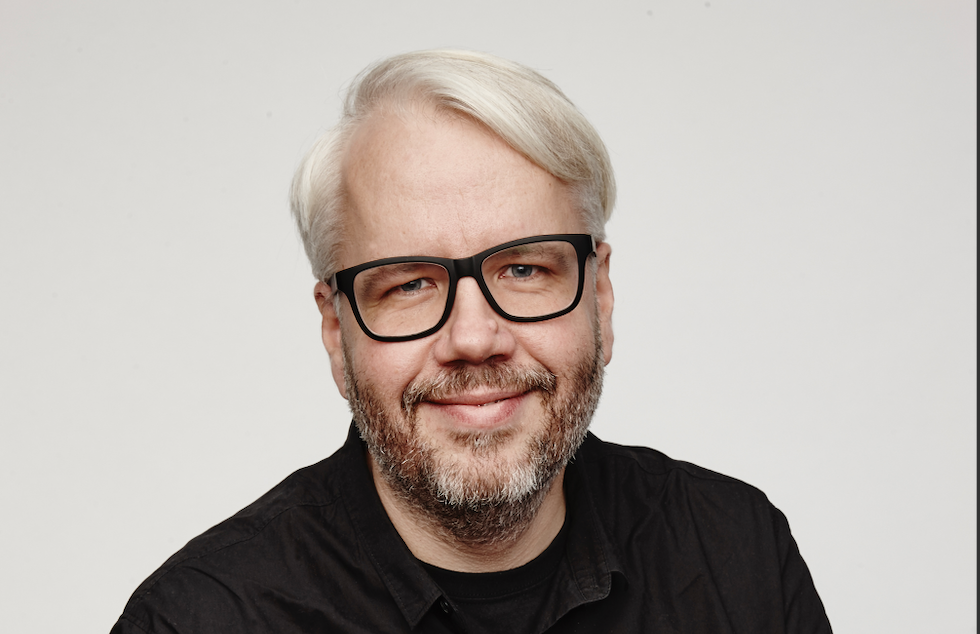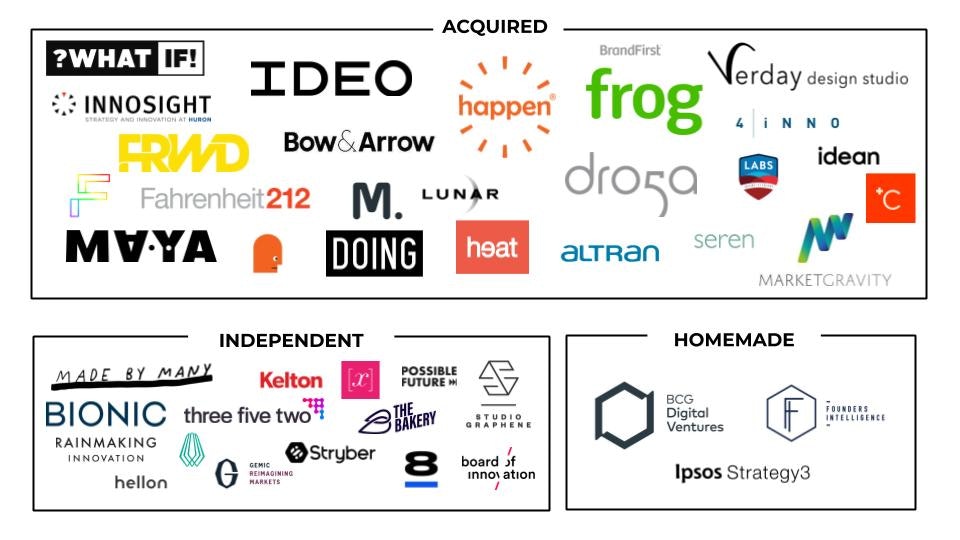Christina Wallace is like a one-woman case study in time management. Not only is she currently an entrepreneur in residence at Harvard Business School and the vice president of growth at Bionic, a growth advisory company that partners with large enterprises to discover and build new businesses, she is also the co-host of The Limit Does Not Exist, a podcast focused on the intersection of STEM (science, technology, engineering and mathematics) and the arts. She also recently co-authored New to Big, a book on how large enterprises can learn to think like startups and invest like a venture capitalist. Oh, and she recently had a baby.
Mashable called her one of "44 Female Founders to Know" and Refinery29 named her one of the "Most Powerful Women in NYC Tech". Christina talks to Sifted about how she priorities her time and what it really means to be an "entrepreneur-in-residence".

Want the Future Proof corporate innovation newsletter in your inbox every Tuesday?
How do you define ‘innovation’?
I see innovation as tackling a challenge or solving a problem in a new way.
What is the main responsibility of an entrepreneur-in-residence (EIR) at Harvard University?
The EIR role at Harvard Business School’s Rock Center for Entrepreneurship can encompass a lot of things. Primarily we are resources for student and alumni entrepreneurs who are looking for feedback on business plans, branding, go-to-market strategies, pricing, hiring, founder relationships and more. But as EIRs we can also partner with professors on case studies and research, serve as judges for the various startup competitions, guest lecture in classes, coach teams in a more hands-on way and develop new companies of our own. It’s quite flexible to accommodate EIRs who have a range of interests, skills and availability.
How does Harvard encourage innovation, and/or operate as an ‘incubator’ for new ideas?
Harvard opened the Innovation Lab (or i-Lab) in 2011 as a physical space for entrepreneurs across the university to gather, work, learn and collaborate. It has grown over the last decade to include innovation challenges, incubation programs, workshops for budding entrepreneurs and office hours from EIRs like me. Harvard has really invested in a number of innovation areas like life science and biotech, and is building out programming and support for alums, both on campus and around the world.
What is the most common mistake large corporations make when working with EIRs?
The biggest hurdle for large organisations when it comes to innovation is process. There are so many processes and systems that have been configured and optimised for the big organisation way of life, but just won’t work for something small and new and not yet defined, which is what a startup is. So if you are going to go through the effort of bringing in an EIR, be thoughtful about how you can help them “hack” the bureaucratic systems and find the gritty, cheap, fast way to get things done. An EIR stuck in a large company with no support won’t make much of an impact. An EIR needs permission and power to do things differently.
An EIR stuck in a large company with no support won’t make much of an impact.
How do you challenge yourself (and your team) to ‘think outside the box’?
I am constantly looking for fresh ideas, inspiration and expertise from a wide range of industries and practices. I don’t just read business and startup press, I’m reading about new approaches to theatre, breakthroughs in healthcare, challenges in early-childhood education, headaches in real estate, novel approaches to publishing and media etc. I curate my Twitter feed pretty carefully to ensure I’m seeing a mix of articles, books, opinions and, yes, memes, from a diverse set of journalists, thought leaders, industry insiders and a fair number of random folk I discovered over the years.
From an EIR perspective what is currently not working in corporate innovation?
There’s a lot that isn’t working in corporate innovation and much of it is because innovation isn’t truly taken seriously in large companies, especially public ones that are beholden to quarterly reporting to Wall Street. Real innovation takes investment of dollars, people and time and that often looks like unnecessary overhead to analysts who are gunning for profits and dividends. So when companies have a tough quarter or year, the innovation investment is the first thing to be cut in order to make the numbers work.
Successful entrepreneurs don’t run their companies 10 or 15% of their time while holding down a demanding day job, they go all-in.
Equally problematic, if employees are told to invest just part of their time on innovation, it will always take a back seat to their day jobs. Successful entrepreneurs don’t run their companies 10 or 15% of their time while holding down a demanding day job, they go all-in. Similarly, empowering small teams of dedicated in-house entrepreneurs will ultimately be more successful than to ask everyone to do “innovation” for an hour a day.
What advice would you give to a new head of innovation — what do they need to get right from day one?
You need to know where the bodies are buried, so to speak. The head of innovation role is one of the highest turnover roles in corporate leadership and you need to know why the previous leaders left and what kind of success and struggles they experienced while they were on the job.
The head of innovation role is one of the highest turnover roles in corporate leadership and you need to know why the previous leaders left.
I’d spend the first 30 days talking to everyone you possibly can to understand what has been tried before and why it failed; what kind of process currently exists for suggesting and experimenting with new ideas; where things get stuck and/or killed off in that process; and what’s in the “graveyard” of previous innovation attempts. You need to diagnose where you’re starting with regards to talent, funding, processes and relationships with the business units.
And don’t forget to look outside the organisation’s walls! What kind of ecosystem does your company exist in and how can you build relationships in your community, industry and with startups and investors in your space? Remember that great innovation doesn’t have to come entirely from within. Sometimes partnerships and strategic acquisitions are just as effective as an entirely organic approach.
As you have three jobs (vice president of growth at Bionic, entrepreneur in residence at Harvard University and co-host of The Limit Does Not Exist) and I heard you just became a first-time mum, what is your secret for time management and prioritisation?
I’m not afraid of working hard; I just want to do it on my schedule.
Nothing helps prioritisation like having kids! If you think you’re busy pre-children, just wait until you have an infant that exists on an every three hours schedule of eat / nappy change / sleep. It’s like a real-life Pomodoro cycle! The key for me is about work-life integration. That is, my calendar and my to do list don’t separate out professional things from personal things. Sometimes the best time to run errands is at 10am on a Tuesday and sometimes I get my best creative work done at 10pm on a Sunday. Early in my career I realised the key to my professional happiness was control over my time and my calendar. I’m not afraid of working hard; I just want to do it on my schedule. So autonomy and diligent time-blocking of everything I need to get done in a week are the two requirements for pulling this off.
Discovering insights through seemingly unrelated ideas and fields is where I get my most powerful “aha!” moments.
What book has been most helpful to you in thinking about entrepreneurship and innovation?
The most impactful book for me was Clay Christensen’s The Innovator’s DNA. So much of how I approach innovation is through borrowing great ideas from one world and applying them in another. Christensen calls this “associating” and it’s a lot of what we talk about on my podcast, The Limit Does Not Exist. We interview folks who have built careers at the intersection of seemingly unrelated fields like astrophysics and jazz or opera and nanotechnology. Discovering insights through seemingly unrelated ideas and fields is where I get my most powerful “aha!” moments.
Want to hear more? Listen to what Christina Wallace thinks about innovation and productivity here.


